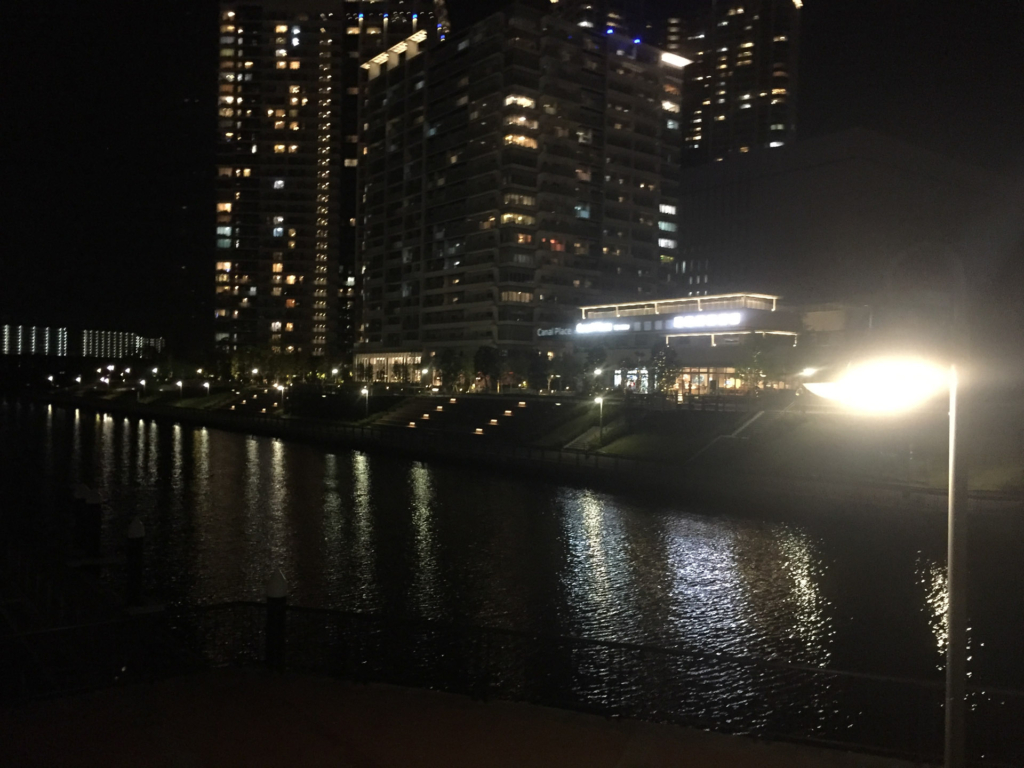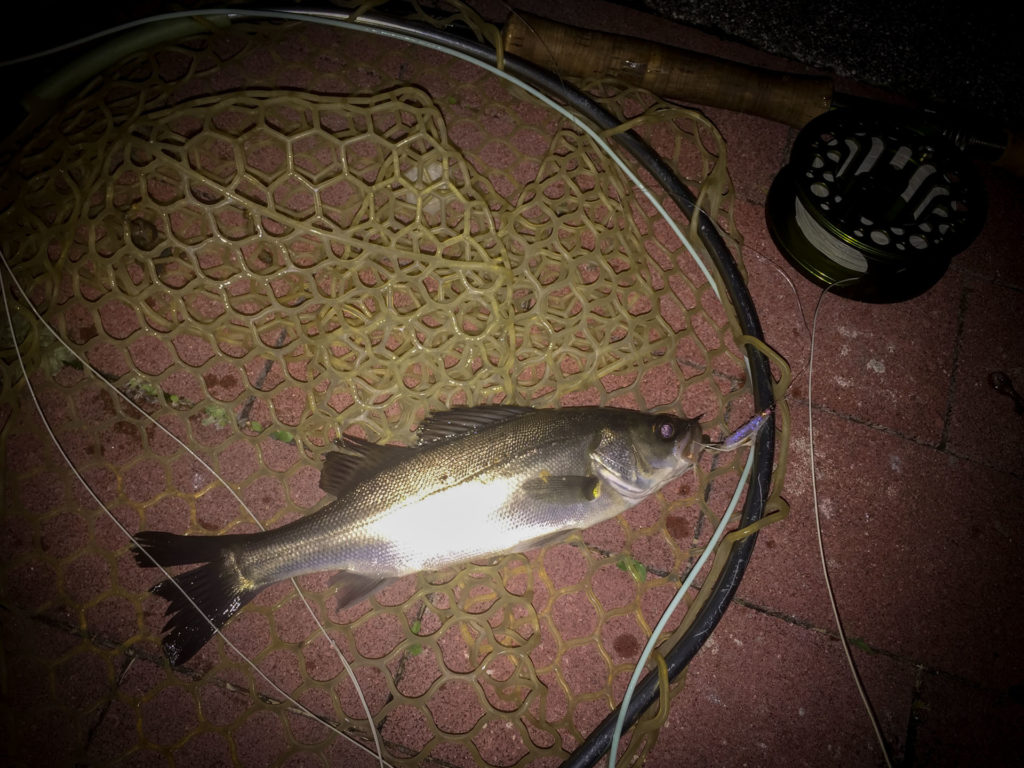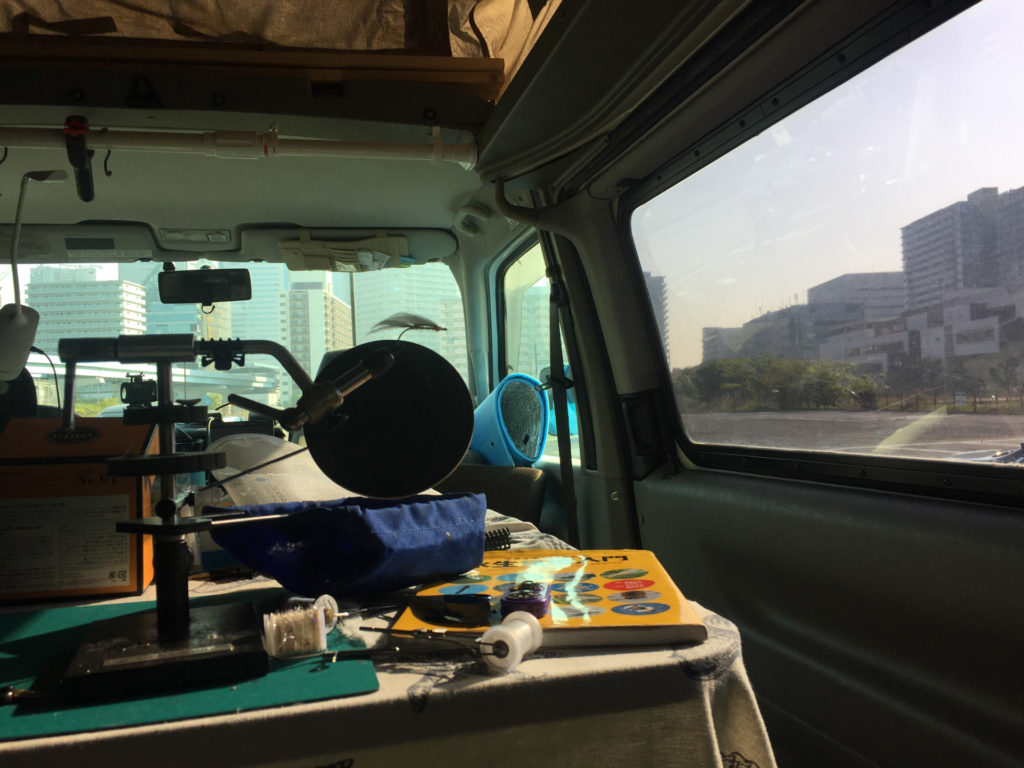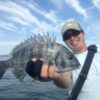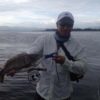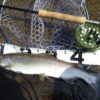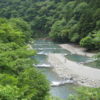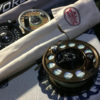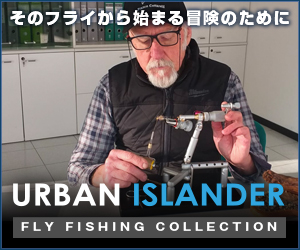Single-hand Skagit for No-wading Bay Water Seabass
I had a window of short Friday night before my Saturday hospital appointment from 8am. Checked the tidegraph and timing was perfect, so jumped on my camper van to the bay area canals in Tokyo only 30 min drive away.
Target is Japanese seabass who hunts from downstream when turbulence or rogue wave distracts baitfish or ambush in dark shade to take odd one out. This is why the best moment in slow moving water area such as canal is when the tide drops from the peak generating greater motion. Well that is not that difficult to set up, however, platform is challenging.
Bay Area Uniquness & Single-hand Skagit
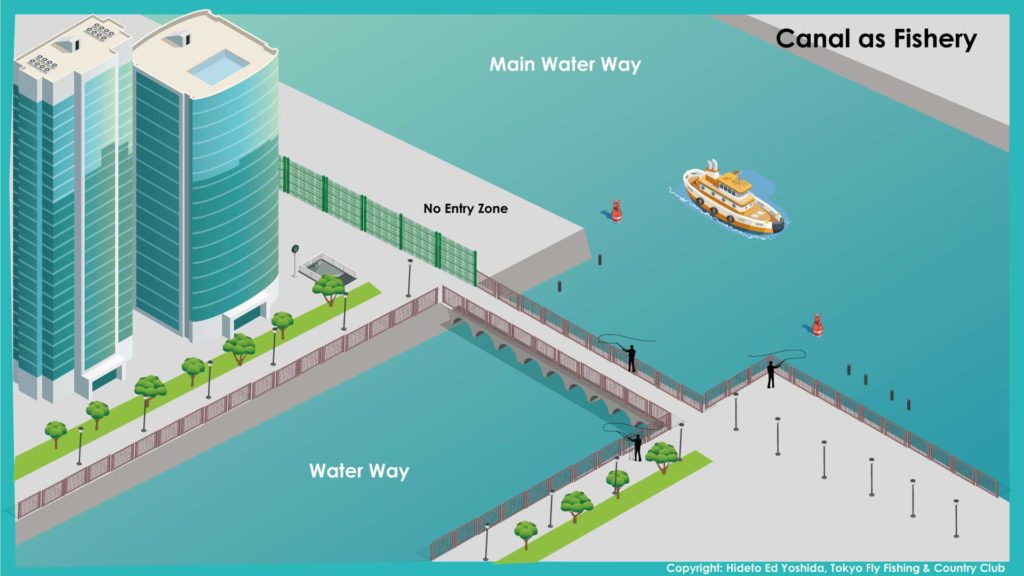
I previously tested OPST Commando Head without wading at all with fantastic performance, so I pushed further to see if it can sustain anchor 6 feet below the platform, make kinetic D-loop that shoots line 70ft away. Theoretically, Commando Head that has 13.5ft with 10ft polyleader is long enough to hug the water just enough to do this.
Set Up
I got to the spot right on peak tide which gave me time to check on the condition of baitfish. What I could see was babysize bay anchovy or mullet about 2.5inches long that I can imitate using rabbit zonker tied on Gamakatsu B10S #2 which has enough gape for the hookpoint to catch a skin of seabass' mouth. Then my plan was to make presentation of fly within 3ft from the top, so I connected AirFlo polyleader 10ft "hover" with 6ft of 12lb fluoro carbon tippet. Entire length from heavy fly, which functions as anchor already, to the tipping point is 16ft long, so this should be more than enough to form good D-loop 6 feet above water.
Execution: Shot Gun
My rod-side shoulder wasn't in very good condition for the past few days, so I started to check spots of turbulence or obstacle 50ft away with Circle C on right and left back and fourth. Well, it was Friday night and lure anglers have already checked on obvious spots then I bumped into a couple of anglers doing "trolling on foot" that is to tag lure just by the edge of bank hitting fish or spooking fish to deep or other places.
So I gave up on the closer side edges and aimed for junction buoy, over the drop off, and awkward spot - all not very favourite spot for lure anglers who don't want to snag their lures. I got very weak strikes in several locations, but fish didn't seem to swallow the fly as a whole. If the fish is big and great enough strength to suck the streamer in, it should have hooked some fish already. My guess was only fish still afloat under some pressure are small seigo size seabass who are not as skillful to suck the fly at once, failed to strike in current too strong for their ability to swim, or mistake fly line as its prey instead of going to fly. That is very similar to what brown trout or groupers do. Common character trait for wary fish who attack fly from his hiding with distance.
So now I needed to to look for more quiet spot yet enough current to urge seabass to position himself downstream to baitfish. One spot touched my "fish senses", but the best position was 10ft high from water where I could hit the water with too great impact to destroy the set up. Or I could choose another position only 6ft above water but I had to cast at least 70ft to deliver fly into the right spot. Perry poke practice must pay off now!
First cast went right into the tight spot by the wall. I saw a nervous water then it went quiet after leaving very slight touch on my fly which was not a bite, but attempt of suck. Cool, he didn't touch the hook. I can try once more. Second cast had to wait for the right timing when bait fish come afloat... so they did... cast...take away line slack quickly. One long stroke to appeal the fly to fish, then very slow long strip to provoke strike.
Strike, perfect hook up, easy landing. Fish turned out to be just 10inch Japanese seaperch we call "seigo", but this is a memorable first saltwater fish since I went into rehab and also my very first fish on skagit in saltwater!
I could go on for bigger brothers, but I couldn't stay up too late, so moved to the car park near my hospital for good night sleep.
After non-alcohol beer to quench my thirst and clean equipment from salinity.
When I woke up it was already an hour before the appointment. So quickly packed the equipment, groomed myself, then the morning walk that serves a commute to my appointment.
Very metropolitan scene, but very fishable field as well.
And you get to enjoy breakfast at Tully's... can't have this in remote places?
Tackle Information
- Skagit Head: OPST Commando Head – 225 grain/13.5 feet
- Shooting Line: Ken Cube EX Shooting Line - floating 0.22
- Tip/Leader: Airflo Polyleader 10ft Hover
- Tippet: Seagur Ace fluoro carbon 12lb test x 6 feet
- Fly Rod: R.L. Winston Boron II-MX 906-4
- Fly Reel:Tibor Light Backcountry CL
この記事のディスカッションに参加する | Join the Discussion
東京フライフィッシング&カントリークラブのFacebook グループ「Friends Lobby」ではメンバー以外の方とのディスカッションも行っています。気になる情報や質問などはこちらまで!

